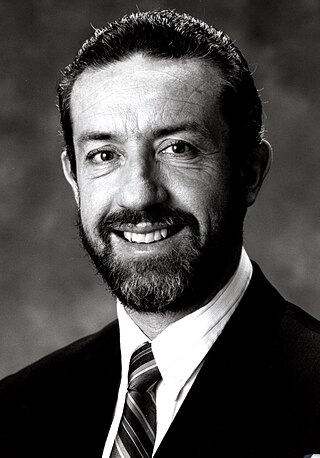
St. Joseph County, colloquial St. Joe County by residents, is a county located in the U.S. state of Indiana. As of the 2020 census, the population was 272,912, making it the fifth-most populous county in Indiana. Formed in 1830, it was named for the St. Joseph River which flows through it to Lake Michigan. The county seat is South Bend. St. Joseph County is part of the South Bend–Mishawaka, IN–MI "Michiana", Metropolitan Statistical Area.

Yueyang, formerly known as Yuezhou or Yochow, is a prefecture-level city on the eastern shores of Dongting Lake and Yangtze in the northeastern corner of Hunan Province in the People's Republic of China.

The Kootenays or Kootenay is a region of southeastern British Columbia. It takes its name from the Kootenay River, which in turn was named for the Kutenai First Nations people.
Highway 22 is a north–south provincial highway in British Columbia that connects the city of Castlegar to the Canada–U.S. border. When the highway was first opened in 1964, it only went as far north from the border as Rossland. Highways 3 and 3B followed the present-day routing of Highway 22 north of Rossland at the time Highway 22 was first opened. The route north of Rossland was given to Highway 22 in 1979. The number of the highway is derived from then-Washington State Route 22, which Highway 22 meets at the border.

Castlegar is a community in the West Kootenay region of British Columbia, Canada. In the Selkirk Mountains, at the confluence of the Kootenay and Columbia Rivers, it is a regional trade and transportation centre, with a local economy based on forestry, mining and tourism.

The Arrow Lakes in British Columbia, Canada, divided into Upper Arrow Lake and Lower Arrow Lake, are widenings of the Columbia River. The lakes are situated between the Selkirk Mountains to the east and the Monashee Mountains to the west. Beachland is fairly rare and is interspersed with rocky headlands and steep cliffs. Mountain sides are heavily forested, and rise sharply to elevations around 2,600 metres (8,500 ft).

King George Secondary School is a public secondary school located in the West End of Vancouver, British Columbia, Canada.

Selkirk College is a public college founded in 1966 with its main campus in Castlegar, British Columbia, Canada. The college has student housing at its Castlegar and Nelson campuses. Students frequently struggle to find accommodation. The college has seen shrinking enrolment for the past seven years, dropping from 1,987 FTE students in 2015/16 to 1,239 in 2022/23. International students currently account for 11% of total student headcount, a decrease of 3% over the past five years, the lowest rate for a public BC college. Indigenous students comprise 8% of total student numbers.

Rossett School is a co-educational secondary school with academy status in Harrogate, North Yorkshire, England. Its pupils are from Harrogate, neighbouring towns and villages, and nearby Leeds, with the latter being a large part of the enrolment. Current enrolment is around 1,400 including 214 in the sixth form.

School District No. 20 (Kootenay-Columbia) is a school district in southeastern British Columbia. It includes Trail, Castlegar, Rossland, Warfield, and Fruitvale.
School District 60 Peace River North is a school district in northeastern British Columbia adjacent to the Alberta border. Its board office is in Fort St. John which is also where the majority of the schools are located. It also serves the outlying communities of Taylor, Prespatou, Hudson's Hope, Buick Creek and Wonowon.

Katrine Conroy is a Canadian politician who was elected to the Legislative Assembly of British Columbia in the 2005 provincial election. She represents the electoral district of Kootenay West as a member of the British Columbia New Democratic Party. She has served in the cabinet of British Columbia since 2017, currently as Minister of Finance.
West Kootenay Transit System is the public transit system in Trail, Castlegar, Nelson, British Columbia and surrounding area. The transit services are operated from Trail, Castlegar, Nelson and serve Rossland, Warfield, Genelle, Montrose, Fruitvale, Salmo, Kaslo, Creston, Nakusp. Funding is provided under a partnership between the Regional District of Kootenay Boundary, Regional District of Central Kootenay and BC Transit. handyDART provides door-to-door transportation for people whose disability prevents them from using conventional bus service.
Robson is an unincorporated community in the West Kootenay region of southeastern British Columbia. The former steamboat landing and railway terminal is on the northeast side of the Columbia River. The residential area is off Broadwater Road, within the northwest part of Greater Castlegar.
Columbia Country refers to the upper basin of the Columbia River in the Canadian province of British Columbia. It includes a smaller region known as the Columbia Valley, near the river's headwaters at Columbia Lake in the Rocky Mountain Trench, as well as the Big Bend of that river, now mostly inundated by Kinbasket Lake and Revelstoke Lake.
The Columbia and Western Railway (C&W) was a historic, and initially narrow gauge, railway in southern British Columbia.

Trail is a city in the West Kootenay region of the Interior of British Columbia, Canada. It was named after the Dewdney Trail, which passed through the area. The town was first called Trail Creek or Trail Creek Landing, and the name was shortened to Trail in 1897.

Roy Edward Conroy was a Canadian politician who served as Member of the Legislative Assembly (MLA) for Rossland-Trail in the Canadian province of British Columbia from 1991 to 2001. He was a member of the British Columbia New Democratic Party.
Stanley Humphries may refer to:













